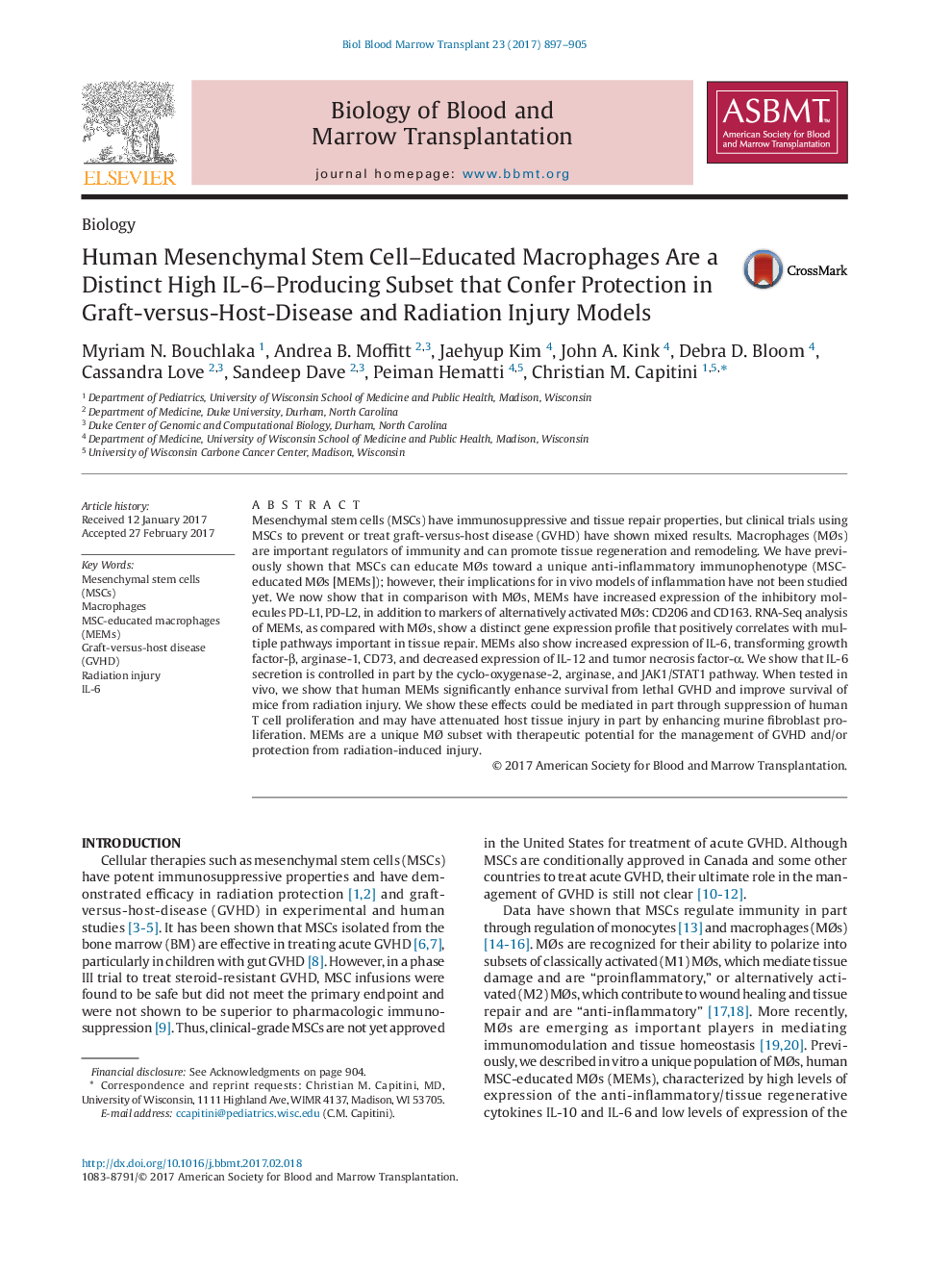| Article ID | Journal | Published Year | Pages | File Type |
|---|---|---|---|---|
| 5524176 | Biology of Blood and Marrow Transplantation | 2017 | 9 Pages |
â¢MSC-educated macrophages (MEMs) are an alternatively activated macrophage subset.â¢MEMs secrete high levels of IL-6 controlled in part by JAK/STAT, arginase, and COX.â¢Infusion of MEMs lead to better survival than MSCs in established xenogeneic GVHD.â¢MEMs improve survival from radiation injury in part through host fibroblasts.
Mesenchymal stem cells (MSCs) have immunosuppressive and tissue repair properties, but clinical trials using MSCs to prevent or treat graft-versus-host disease (GVHD) have shown mixed results. Macrophages (MÃs) are important regulators of immunity and can promote tissue regeneration and remodeling. We have previously shown that MSCs can educate MÃs toward a unique anti-inflammatory immunophenotype (MSC-educated MÃs [MEMs]); however, their implications for in vivo models of inflammation have not been studied yet. We now show that in comparison with MÃs, MEMs have increased expression of the inhibitory molecules PD-L1, PD-L2, in addition to markers of alternatively activated MÃs: CD206 and CD163. RNA-Seq analysis of MEMs, as compared with MÃs, show a distinct gene expression profile that positively correlates with multiple pathways important in tissue repair. MEMs also show increased expression of IL-6, transforming growth factor-β, arginase-1, CD73, and decreased expression of IL-12 and tumor necrosis factor-α. We show that IL-6 secretion is controlled in part by the cyclo-oxygenase-2, arginase, and JAK1/STAT1 pathway. When tested in vivo, we show that human MEMs significantly enhance survival from lethal GVHD and improve survival of mice from radiation injury. We show these effects could be mediated in part through suppression of human T cell proliferation and may have attenuated host tissue injury in part by enhancing murine fibroblast proliferation. MEMs are a unique Mà subset with therapeutic potential for the management of GVHD and/or protection from radiation-induced injury.
